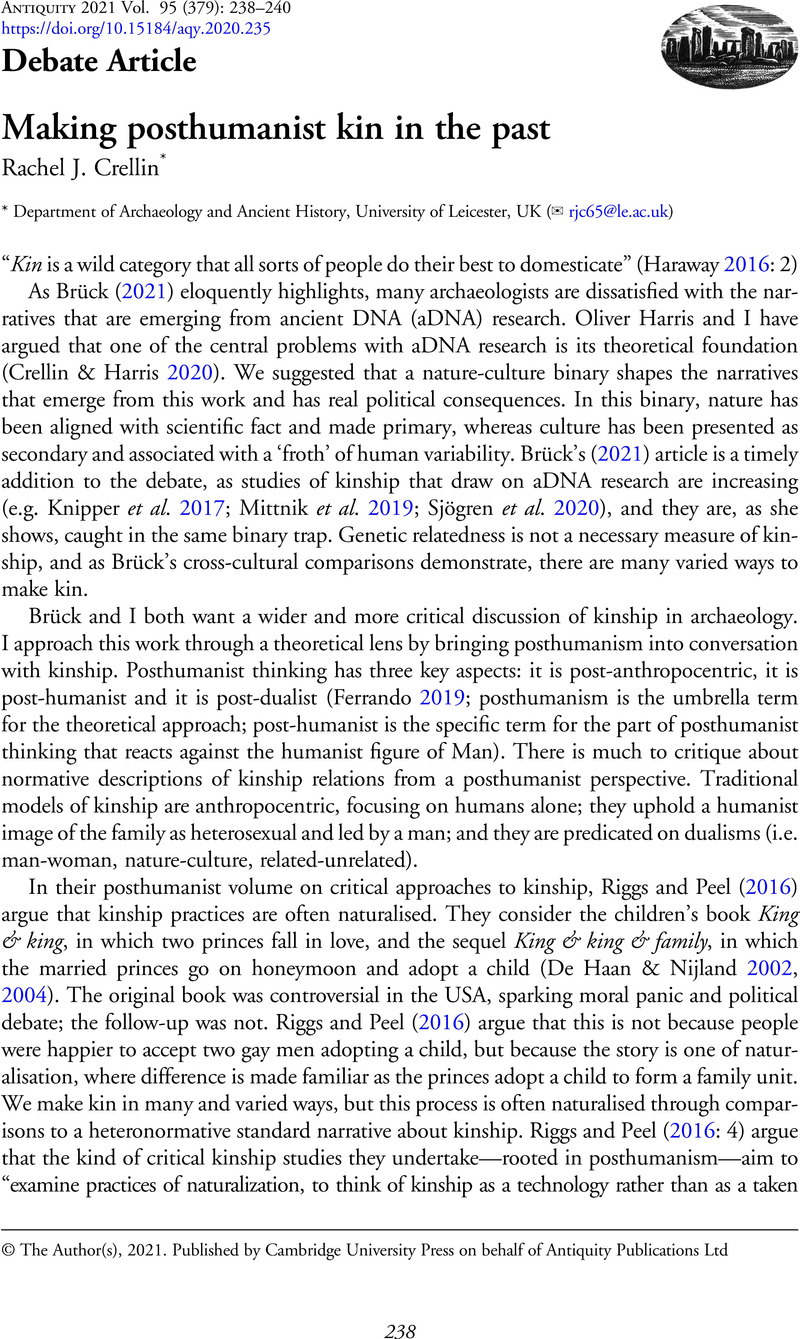Crossref Citations
This article has been cited by the following publications. This list is generated based on data provided by Crossref.
Brück, Joanna
2021.
Kinship: politics and practice.
Antiquity,
Vol. 95,
Issue. 379,
p.
249.
Frieman, Catherine J.
and
McNeil, Emma
2024.
The International Encyclopedia of Anthropology.
p.
1.
Whittle, Alasdair
2024.
Kinship questions.
Documenta Praehistorica,
Vol. 51,
Issue. ,
p.
238.
Mazzucato, Camilla
Coscia, Michele
Küçükakdağ Doğu, Ayça
Haddow, Scott
Kılıç, Muhammed Sıddık
Yüncü, Eren
and
Somel, Mehmet
2025.
“A Network of Mutualities of Being”: Socio-material Archaeological Networks and Biological Ties at Çatalhöyük.
Journal of Archaeological Method and Theory,
Vol. 32,
Issue. 1,
Kompatsiaris, Panos
2025.
Gore kinship: The cultural economies of killing in an ethnography of invasive pufferfish in Crete.
Ethnography,


